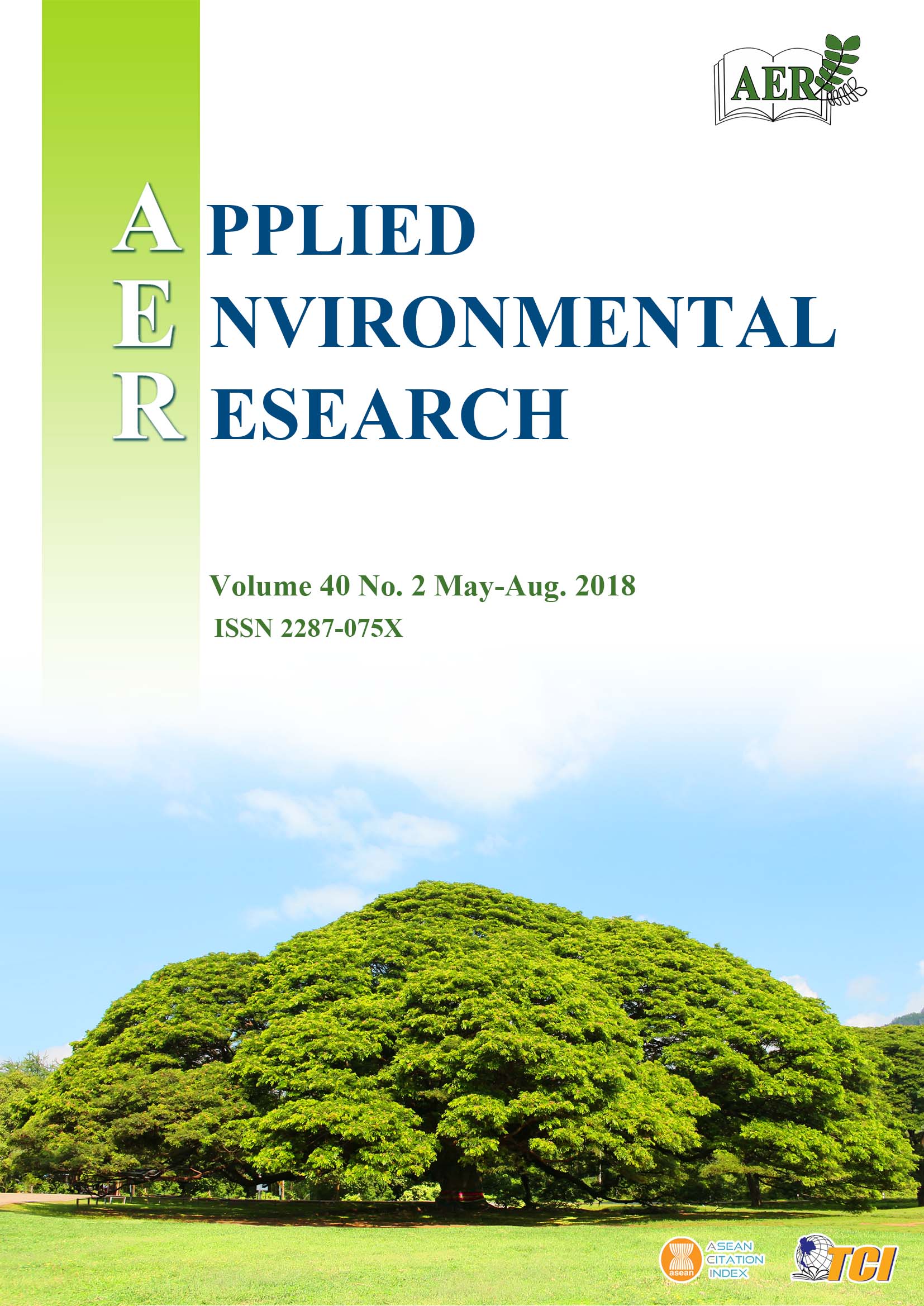Effect of Acid-Alkaline and Thermal Pre-treatment to Cassava Pulp Feed for Batch Reactors in Optimization of Bio-Methane Yield
Main Article Content
Abstract
Cassava starch mills in Nakhon Ratchasima province operate biogas plants to generate renewable energy from surplus cassava pulp using anaerobic digestion (AD) technologies. However, the biogas yields fluctuate and digestion failure occurs due to suboptimal digester configuration and lack of understanding of the specific properties of cassava pulp substrate. This study used acid-alkaline and thermal pre-treatment to modify the cassava pulp substrate to enhance biogas yields. Concentrated 36 N sulphuric acid (H2SO4) and 20 M sodium hydroxide (NaOH) was chosen as an acid-alkaline pre-treatment to adjust to the required pH for the substrates, and 45 min at 200 ˚C for the thermal pre-treatment. Extreme pH adjusted substrates such as T1, T2, T12 and T13 required both acid and alkali in high volume, and inhibition occurred from both acid and alkali resulting in retardation of fermentation by hydrolytic bacteria, a lower volatile fatty acid to total alkalinity ratio (VFA/TA), more depletion of reducing sugars and a lower bio-methane yield. The results showed Soluble Chemical Oxygen Demand (SCOD) obtained from decomposition of lignocellulosic structure of fresh cassava pulp by combined thermal-chemical pre-treatment, was found highest in T2 which was pre-treated at pH 2 having more than 100 g L-1. Though SCOD could be enhanced by acid-alkaline pre-treatment, it led to inhibition driven by radicals of acid and alkaline. Three different mixing ratios, i.e. 3 %, 5 %, and 10 % (w/v) were compared against without pre-treated samples, and found 5 % Total Solids (TS) was most suitable after subjected to acid-alkaline pre-treatment and produced biogas yield at 4125.2 mL kg-1 TS in batch digestion for 21 d. Pre-treatment was found increase bio-methane by up to a factor of six.
Article Details

This work is licensed under a Creative Commons Attribution-NonCommercial 4.0 International License.
Published articles are under the copyright of the Applied Environmental Research effective when the article is accepted for publication thus granting Applied Environmental Research all rights for the work so that both parties may be protected from the consequences of unauthorized use. Partially or totally publication of an article elsewhere is possible only after the consent from the editors.

